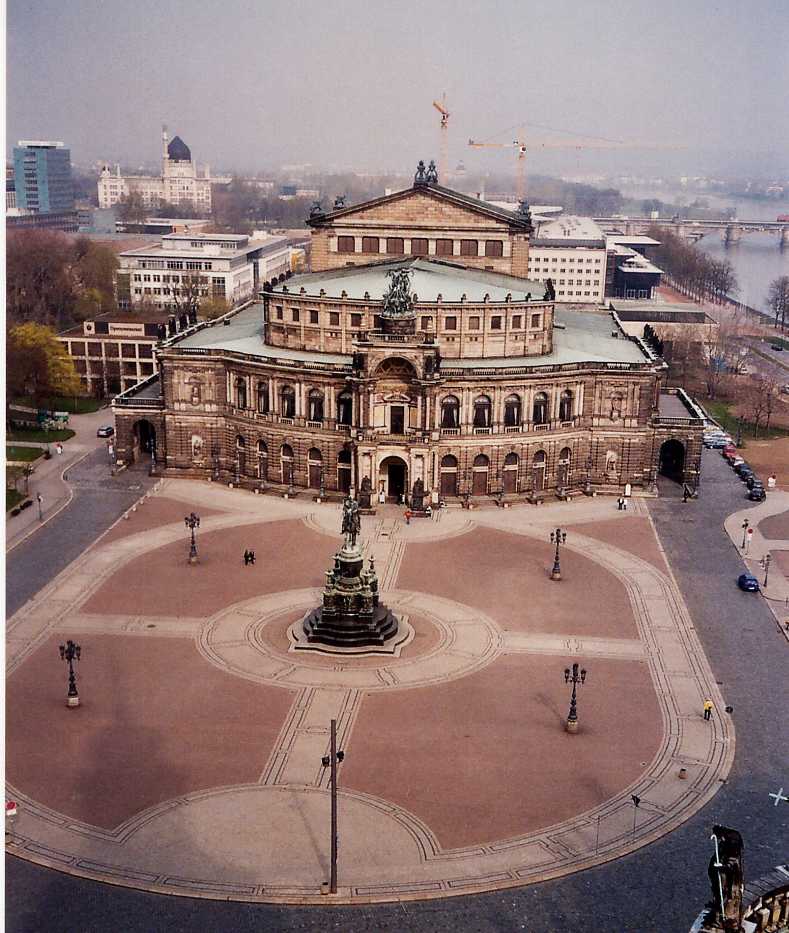Gottfried Semper, John Ruskin, and Eugene Viollet-le-Duc, were three very important men that helped shape the early movement of Modern Architecture in the 19th century. Through their publication of theory and practice in architecture, they each portrayed unique ideas and elements in regards to built and restored architecture. It is in these differing elements of architectural theory that lead to debate and criticism surrounding their work. Even though some their ideas were disputed against one another, their contributions were significant to the development of Modern Architecture.
Semper was responsible for many key writings, which started with his Four Elements of Architecture in 1851. It is in these writings that Semper conveys his belief that architecture is a reflection of socio-political conditions while also trying to systematically classify architectural forms as a typology. In The Four Elements of Architecture, divides all built form into four categories: the hearth, which represents the central social element, the platform, which serves to elevate the hearth, the roof, which protects the hearth from the rain, and the enclosure, which keeps out the rain and the cold. Semper favored Classical Greek style because he thought that it embodied social values that his Four Elements could be constructed upon. Semper did not appreciate Gothic as Ruskin and Viollet-le-Duc. Semper was very much interested in craftsmanship and the technical arts and was later criticized for discounting technological innovation (such as steel). In his famous work of the Semperopera in Dresden, Germany, his style of Eclecticism can be seen in his use of Renaissance, Baroque, and Greek features. In regard to Semper’s view on built and restored architecture, he was not against the restoring of buildings as he approved of his son updating the Semperopera after it burned in 1869.
Unlike Semper, Ruskin was a strong admirer for Gothic architecture. In Ruskin’s The Seven Lamps of Architecture, he describes the seven moral values that he believes are necessary for all pieces of architecture to hold. Ultimately, Ruskin believed that Gothic architecture provided these moral values in its strong connection to religion. Much like Semper, Ruskin also was against mechanization and the innovative uses of iron. Ruskin believed in the importance of nature and its ability to cater to the creative expression of artists and craftsmen. Through this, Ruskin is often characterized as being very emotional in his view towards architecture, that Gothic is the “architecture of life”. These charged feelings also carried over into his view on preservation of old buildings. Ruskin believed that buildings should be left in their original form and to decay in order to properly portray the time period in which they were built for.
Viollet-le-Duc was much like Ruskin in his adoration for the Gothic style, but different from both him and Semper in their distaste for the use of iron. Viollet-le-Duc was very much a rationalist when it came to architectural form and style. It was the structure and tectonics of the Gothic style that Viollet-le-Duc was interested in. Viollet-le-Duc believed that true architecture should have a clear purpose and function, as opposed to Ruskin who believed that the ornamentation made good architecture. In his works, Viollet-le-Duc used a mixture of elements and materials which lead to his conceptualizations in material joinery and tectonics.
Conceptualization of stone and steel Viollet-le-Duc (1864)
Viollet-le-Duc not only disagreed with Ruskin in the use of iron, but also in his view that architecture can and should be restored. His well-known restoration of the Medieval Carcassonne fortress was controversial and would have been seen as a horrible slight by Ruskin. Viollet-le-Duc was mainly criticized for using material and style not native to the particular region he was building in.
Even though these men shared differing views on style, material, and preservation, they each provided a unique commentary on the issues in architecture during that time period. Their observations, theories, and practices ultimately paved the way for the future of Modern Architecture.



Good, concise description of Ruskin’s, Semper’s, and le-Duc’s ideas and writings. Good choice of images as well. A slightly more specific statement about why they contributed to modern architecture could have made a stronger conclusion. Excellent work!
ReplyDeleteA Review of Microgaming, the casino on the move
ReplyDeleteMicrogaming, the casino 여수 출장마사지 on 경기도 출장마사지 the move, 문경 출장안마 has been a 광양 출장안마 player-friendly casino, offering 시흥 출장안마 a great selection of games, a great customer experience and